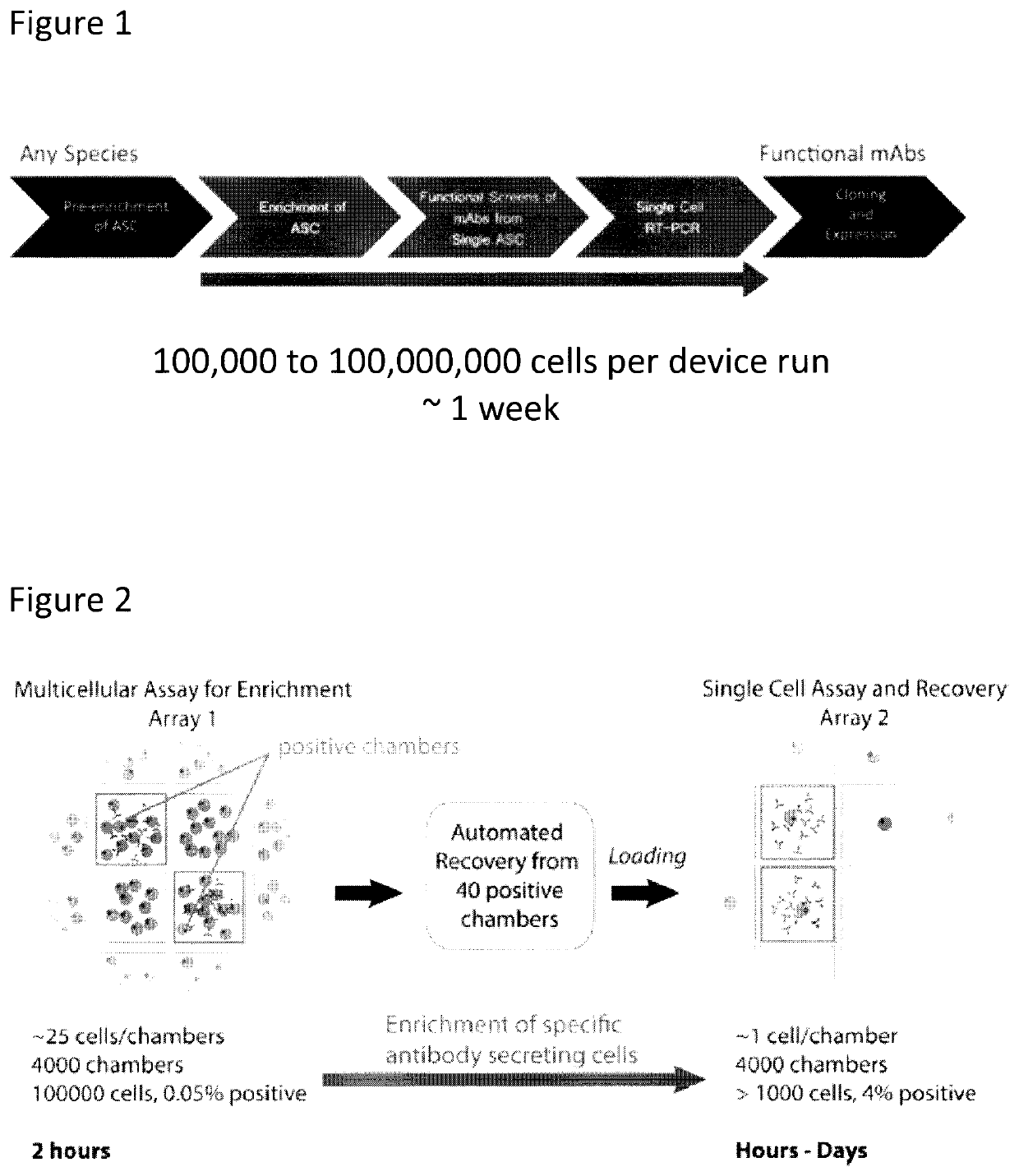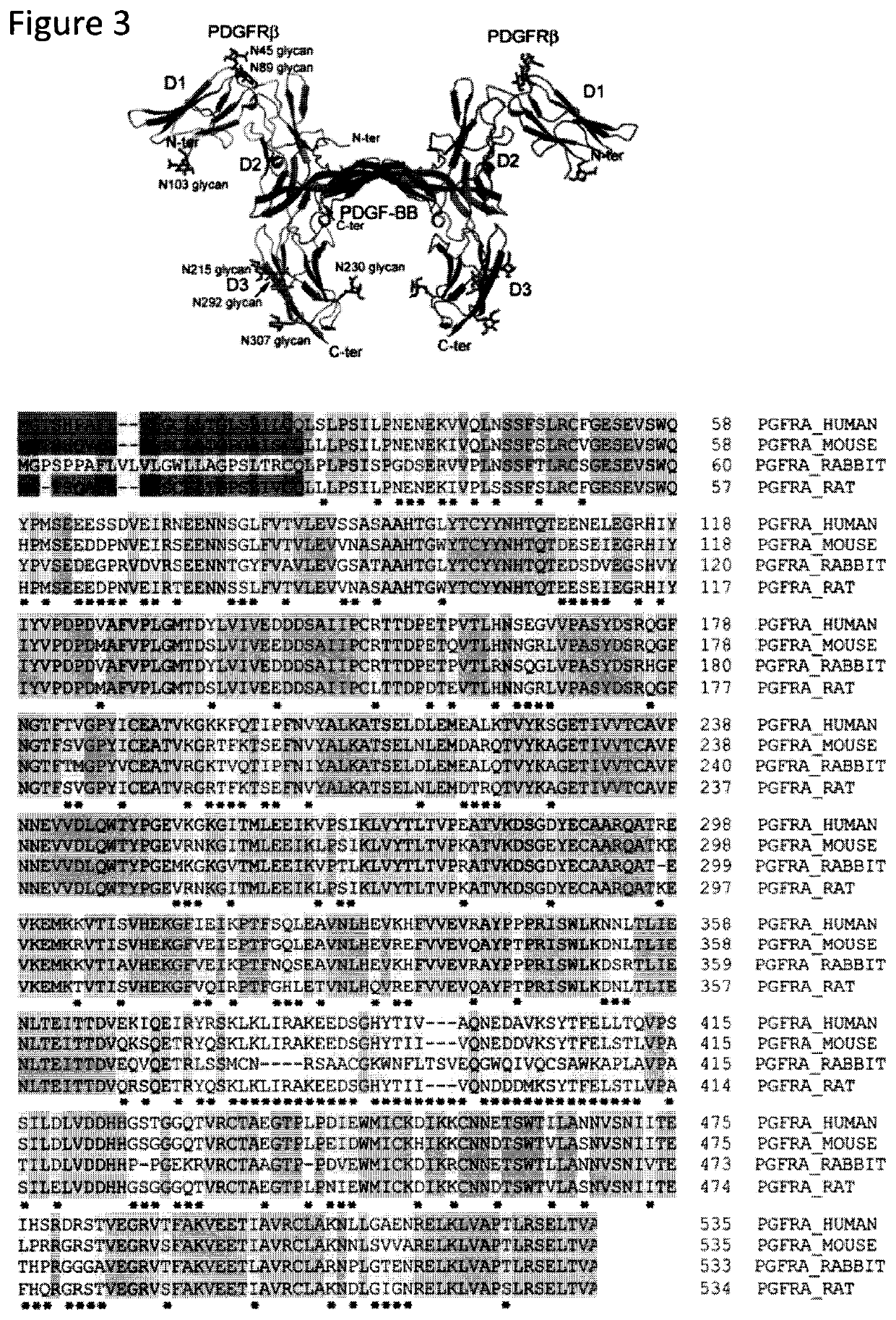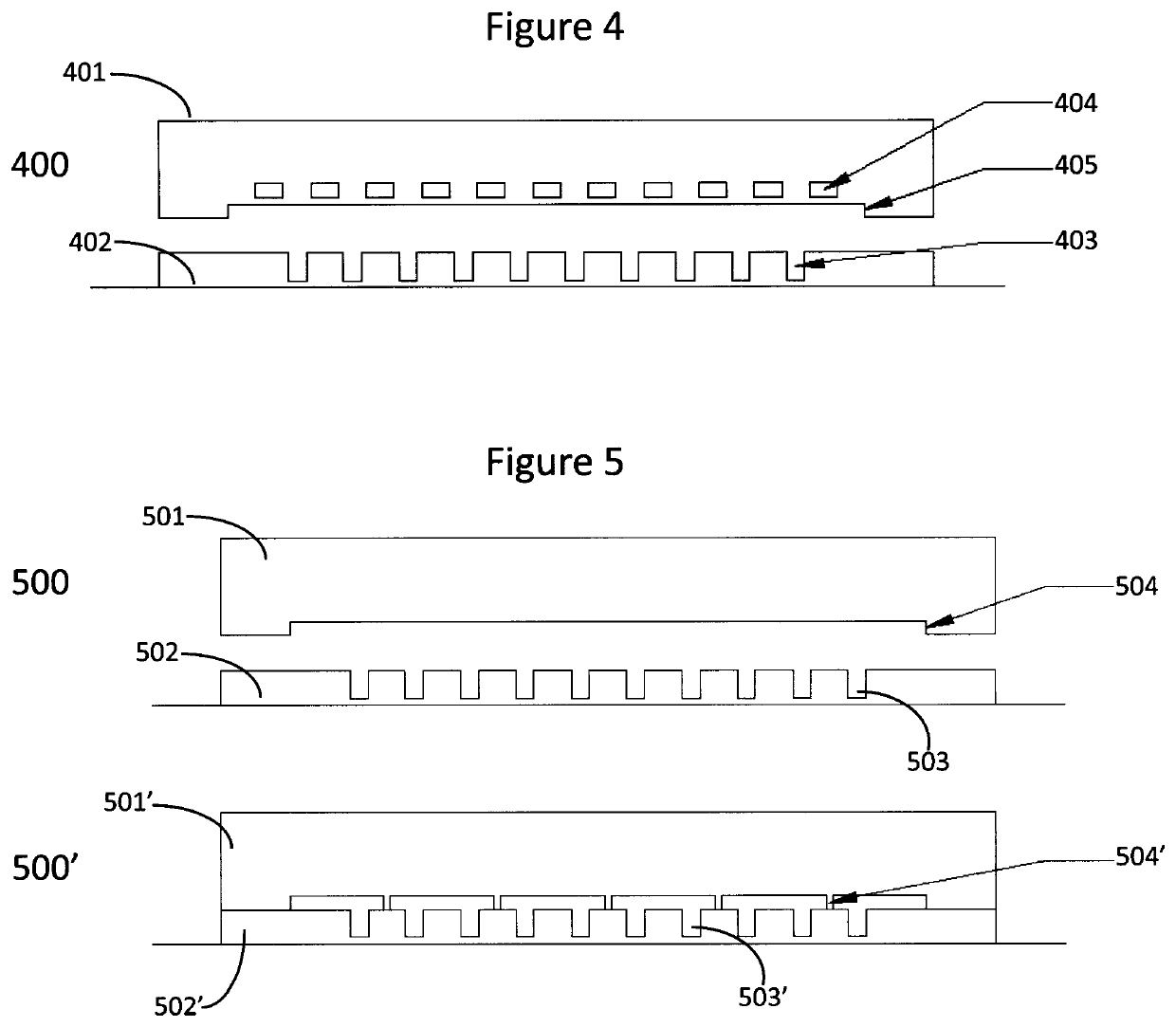Devices and methods for cellular secretion analysis
- Summary
- Abstract
- Description
- Claims
- Application Information
AI Technical Summary
Benefits of technology
Problems solved by technology
Method used
Image
Examples
example 1
oading into Two-Component Microfluidic Device
[0305]The efficiency of loading a two-component microfluidic device comprising arrays of individual microfluidic chambers was assessed by loading multiple types of microparticles into the open chambers of the bottom component of the device. The dimensions of the microfluidic chambers were 80 μm×120 μm×160 μm (width, length, height).
[0306]Five populations of microparticles, each consisting of 5 μm diameter polystyrene beads labeled with a different concentration of fluorophore, were prepared at even concentrations of approximately 1,000,000 beads per mL. Each of the five populations were mixed together in a single tube at equal volumetric ratios. A 100 μL aliquot of the mixture containing approximately 100,000 total microbeads was introduced over a section of the bottom layer of the two-component microfluidic device having approximately 10,000 total chambers. This corresponded to approximately 10 beads per chamber.
[0307]The device was then...
example 2
ing into Two-Component Microfluidic Devices
[0314]The loading of adherent readout cells was assessed in a two-component device of the invention, and compared to the loading of the same cells into a preassembled microfluidic device fabricated via MSL.
[0315]The loading of an adherent cell line (Tango™ CXCR4-bla U2OS) into pre-assembled microfluidic device was assessed by introducing cells through an inlet port and flowing them into the individual chambers through microfluidic channels (channel width 100 μm). This resulted in poor chamber loading uniformity with increased concentrations of cells in the center of the device, low cell loading in the corners of the device, and large variability in the cell loading density between adjacent chambers. Channel clogging due to cell sticking was observed even in medium conditions that included trypsin (FIG. 32). Further, once loaded into chambers and after incubation, cells did not plate down well and showed morphology consistent with stress. Ce...
example 3
Chamber Aspect Ratio During Medium Exchange
[0318]A series of experiments were conducted to evaluate the influence of chamber aspect ratio on two-component microfluidic device performance during the exchange of chamber medium. In one experiment, microfluidic devices having chambers with differing aspect ratios (ratio of the depth / height to the minimum lateral dimension), were tested to determine if medium exchange by providing solution over chambers containing cells or beads results in loss of the cells or beads from chambers, or displacement of the cells or beads within chambers.
[0319]A device having chambers with dimensions of 100 μm×100 μm×150 μm (depth / height×width×length), corresponding to an aspect ratio of about 1, and channel dimensions of 20 μm×100 μm (height×width) were tested as differing flow rates. Fluid ports at the inlet and the outlet of the device were connected to pressure regulators and the pressure was adjusted to modulate the flow rate through the channels. It wa...
PUM
 Login to View More
Login to View More Abstract
Description
Claims
Application Information
 Login to View More
Login to View More - R&D
- Intellectual Property
- Life Sciences
- Materials
- Tech Scout
- Unparalleled Data Quality
- Higher Quality Content
- 60% Fewer Hallucinations
Browse by: Latest US Patents, China's latest patents, Technical Efficacy Thesaurus, Application Domain, Technology Topic, Popular Technical Reports.
© 2025 PatSnap. All rights reserved.Legal|Privacy policy|Modern Slavery Act Transparency Statement|Sitemap|About US| Contact US: help@patsnap.com



